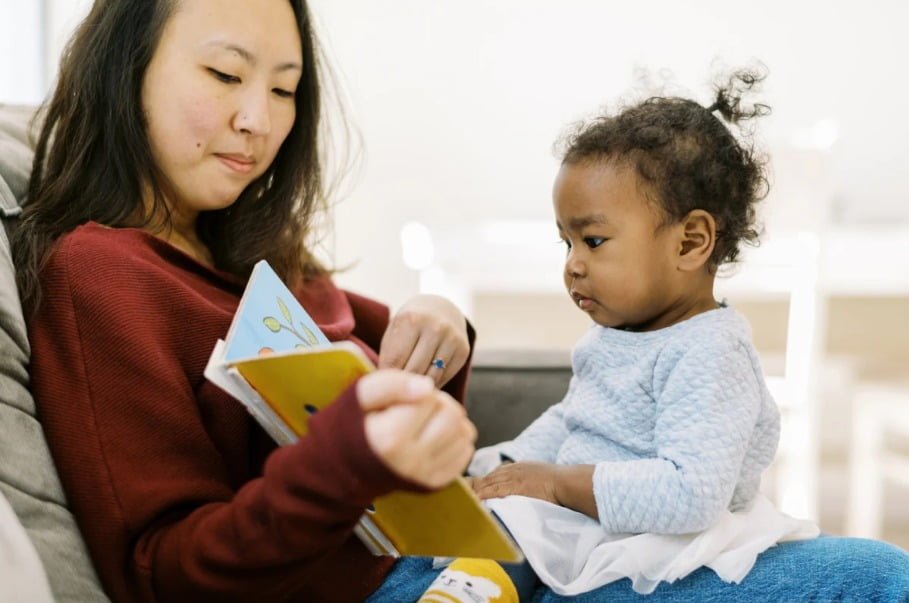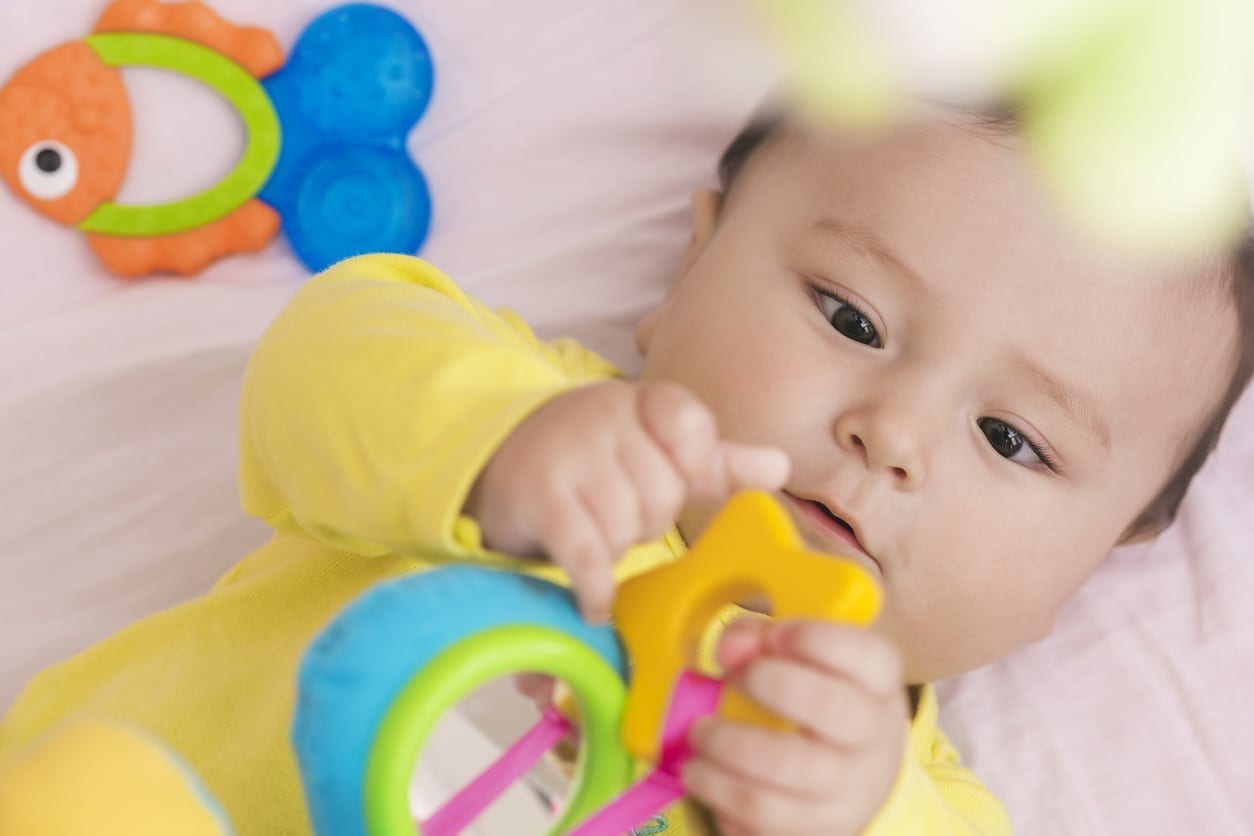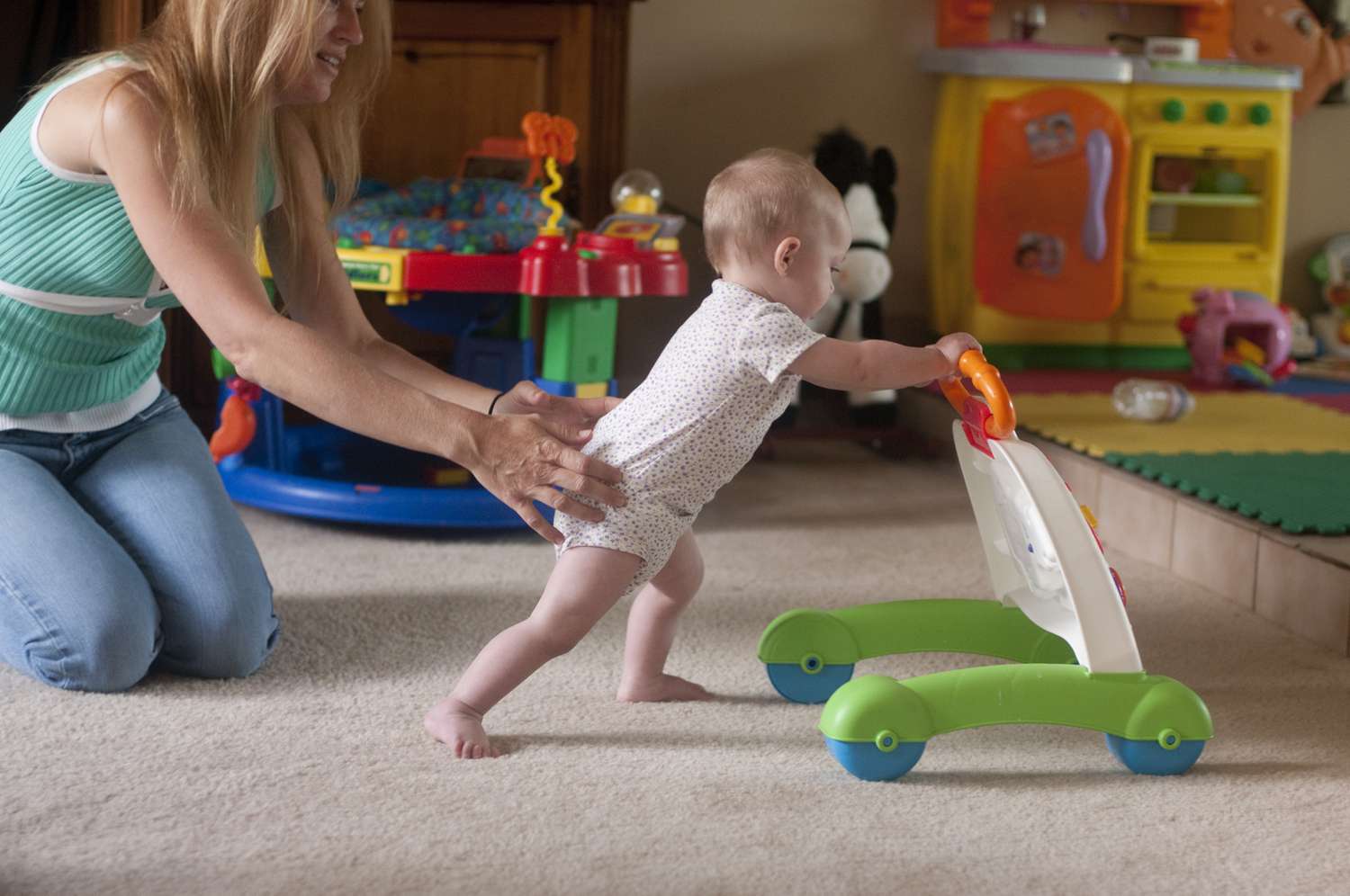
Your little one is on the move! The months between 12 and 18 months see your baby gaining mobility, independence, and confidence as they master new physical skills. This is an incredibly exciting time as your child transitions from babyhood into toddlerhood.
Play takes on new meaning during this stage. Your child still requires lots of hands-on interaction but also benefits from activities that build autonomy. Choosing the right mix of baby activity toys and play spaces allows your toddler to develop physically, cognitively, socially, and emotionally through self-directed fun.
This article will break down the major milestones of 12 to 18 month olds and explain how different toys and activities support growth across developmental domains. You’ll learn about:
- Toys for improving physical abilities like walking, balance, and coordination.
- Toys for enhancing cognitive skills like problem-solving, language, and object permanence.
- Toys for building social and emotional capabilities like self-awareness, self-soothing, and social interactions.
- Tips for choosing age-appropriate toys and designing engaging play spaces.
Discovering new toys and activities is incredibly rewarding at this age. Watching your little one light up with delight and pride gives you a window into their blossoming mind. Keep reading for the top playtime picks to engage your busy 12 to 18 month old!
Key Milestones for 12-18 Month Olds
The 12 to 18 month period brings monumental physical, social-emotional, and cognitive shifts. Here’s an overview of the key milestones your child will likely achieve during this phase:
Physical milestones:
- Improved walking skills – switching between walking and running, maneuvering around obstacles
- Climbing – climbing onto furniture, using playground structures
- Increased strength and coordination – throwing balls, building towers
- Pincer grasp perfection – using thumb and forefinger to pick up small objects
- Self-feeding finger foods – able to grasp food and feed themselves
Social and emotional milestones:
- Attachment to caregivers – separation anxiety emerges as independence increases
- Social interest – greater interaction with other children, imitation
- Self-awareness – recognizes themselves in the mirror, shows preferences
- Independence – insists on doing things themselves like dressing
- Simple pretend play – interacts with dolls, stuffed animals and toys
Cognitive milestones:
- Follows multi-step directions – can carry out 2-3 step requests
- Language explosion – vocabulary expands to 50+ words
- Object permanence understanding – can find hidden objects
- Cause and effect learning – experiments with mechanical toys
- Symbolic thought emergence – uses objects as symbols in pretend play
Why Play is Essential from 12-18 Months
Play takes on new depths of complexity during the 12 to 18 month phase. As opposed to simple sensory exploration, toddlers engage in more structured play that builds both independence and social interaction.
Here are some of the key developmental benefits of play from 12-18 months:
Physical skills: Play activities strengthen gross and fine motor skills through movement and object manipulation. Climbing, running, and building with blocks improve coordination. Shape sorters and puzzles build dexterity.
Cognitive growth: Games with simple rules, pretend play, and cause-and-effect toys build cognitive capabilities. Imaginative play spurs creativity and symbolic thinking.
Language development: Reading, song games, and mimicry of sounds expand verbal skills. Pretend play exposes toddlers to naming objects and role-playing scenarios.
Problem solving: Puzzles, shape sorters, and stacking toys require logic and sequenced steps to accomplish goals. This teaches crucial problem-solving abilities.
Self-awareness: Self-recognition emerges through mirror play. Preferences appear for certain toys and playmates. Toddlers assert independence by directing activities.
Emotional skills: Comfort items like stuffed animals provide security. Noisy toys give safe outlets for self-expression. Taking turns builds empathy and cooperation.
With this foundation, let’s explore some of the best toy and playtime choices to spur learning across physical, cognitive, social and emotional domains.
Section 1: Toys for Physical Development (12-18 Months)
The 12-18 month period brings huge leaps in mobility. Your increasingly daring toddler will crave activities to practice walking, climbing, running and balancing. The right toys can build physical confidence while keeping your active toddler safely occupied.
Here are top picks for boosting gross motor skills:
Push/Pull Toys
Push/pull toys like shopping carts, wagons, and corn popper push toys allow your toddler to practice walking while keeping hands free for stability. The resistance builds strength in the arms and shoulders needed for controlled movement. Your child will delight in loading up toys and treasures for transport around the house.
Benefits:
- Builds walking skills and balance
- Strengthens arm, shoulder and core muscles
- Allows for independent play while walking
- Fun pretend play prop when loaded up with “groceries”
Soft Blocks and Construction Toys
Giant soft blocks, foam bricks, and plastic construction toys encourage hands-on building. Your toddler will develop hand-eye coordination by stacking vertically and horizontally. Knocking down structures also teaches cause-and-effect lessons. Look for large pieces sized for little hands.
Benefits:
- Improves fine and gross motor skills
- Allows creativity and imagination in building
- Teaches coordination through stacking/knocking down
- Safe, lightweight materials prevent injury
Balls
At this age, toddlers can grasp and throw balls with increasing skill. Lightweight, soft balls support rolling, catching, throwing and kicking games indoors or out. Playing together helps you gauge coordination as your toddler learns to aim and control movements.
Benefits:
- Builds overall body coordination
- Strengthens arms, shoulders and core through throwing
- Provides important bonding time through interactive games
- Can be used in variety of games to build skills
Activity Centers and Walkers
Look for activity centers with a variety of features on a sturdy base your toddler can push or walk behind. Spinning beads, gears, and interactive light-up panels engage fine motor skills while supporting cruising and walking. Many convert to ride-on push cars.
Benefits:
- Supports early walking skills and standing balance
- Strengthens leg muscles through cruising and walking
- Engages hand-eye coordination through interactive features
- Grows with child as riding toy after walking independently
The opportunity to take steps toward independence is exhilarating during the 12-18 month phase. Fill your toddler’s play zones with toys that safely build physical confidence and abilities.
Section 2: Toys for Cognitive Development (12-18 Months)
Your toddler’s understanding of objects, language, spatial relationships and problem solving explodes between 12-18 months. Support cognitive growth with toys that teach cause-and-effect, organization, and imitation skills through hands-on play.
Here are top picks for boosting cognitive abilities:
Shape Sorters and Puzzle Toys
Shape sorters require visually matching objects to correctly shaped openings. Puzzle toys encourage manipulations like twisting, pulling apart and reconnecting pieces. These toys build crucial cognitive skills including:
- Hand-eye coordination
- Shape and color recognition
- Spatial relationship understanding
- Visual perception
- Problem solving
Stackers and Nesting Cups/Bowls
Stacking toys and nesting cups promote sequencing, order and balance. Watching towers topple teaches lessons in physics and spatial relationships. Nesting cups and bowls require matching sizes and problem-solving to recreate tower formations.
Benefits include:
- Understanding object permanence as items are hidden and revealed
- Practicing order and positions through stacking
- Developing spatial reasoning skills
- Learning about balance through tower building
- Cultivating patience and resilience through repeated attempts
Board Books
Readingboard books together establishes important reading routines while building language and listening skills. Choose books with simple stories, bright pictures and sensory elements like flaps or touch-and-feel panels. Model pointing out and naming objects on pages.
Benefits include:
- Growing receptive and expressive language
- Learning turn-taking and focus during story time
- Exposure to new words and concepts through pictures and text
- Developing listening and comprehension skills
- Bonding through cuddling and reading together
Pretend Play Items
Equip your toddler for independent pretend play scenarios with items like toy phones, kitchen sets, dolls and play workbenches. Your child will imitate your actions, assign “roles” to toys and create imaginary stories.
Benefits include:
- Sparking creativity, symbolic thinking and language
- Building social skills and empathy through role play
- Reinforcing learning of real-life activities and objects
- Allowing safe exploration of emotions and relationships
- Practicing motor skills through functional toy use
The cognitive leaps between 12-18 months are stunning. Stock up on toys that allow your toddler to grasp concepts through hands-on play.
Section 3: Toys for Social/Emotional Development (12-18 Months)
Social and emotional skills blossom alongside independence from 12-18 months. Your toddler is forming their unique personality and realizing they are a separate being from caregivers. The right toys for your baby can nurture self-awareness and social bonding during this sensitive time.
Toys that build social-emotional growth include:
Mirrors
Mirrors allow toddlers to recognize themselves and build self-awareness. Pointing out face parts like eyes, nose and mouth helps your child identify facial features. Make silly faces together and describe emotions like happy, sad and surprised.
Benefits:
- Develops self-recognition and facial processing skills
- Allows labeling body parts to grow language
- Helps identify emotions and facial expressions
- Provides a textured surface toddlers enjoy rubbing
Puppets
Simple hand puppets allow interactive play between parent and child. Have the puppet greet your toddler and ask them questions to model back-and-forth conversation. Puppets can also act out emotions like sadness, anger or fear to expand feeling vocabulary.
Benefits:
- Engages toddler in joint attention and interaction
- Provides a “safe” character for trying new social skills
- Develops empathy, cooperation and role play
- Expands emotional intelligence and language
Social Games
Playing social games like rolling a ball back and forth helps toddlers learn the foundations of cooperation and turn-taking. As skills progress, add gentle chasing games and blanket forts to more complex joint play. Narrate your actions and acknowledge their participation.
Benefits:
- Establishes back-and-forth interactions
- Teaches sharing, waiting for a turn
- Practices interpreting others’ facial cues
- Provides important bonding time together
Noise-Making Toys
Noise-making toys like drums, maracas, and xylophones allow safe expressions of big emotions. Making loud or soft sounds helps toddlers self-regulate. Celebrate all “musical experiments” without judgment.
Benefits:
- Channels strong feelings like excitement, anger or tension
- Establishes cause-and-effect through sound production
- Allows creativity and emotional release
- Builds understanding of opposites like loud/soft, fast/slow
Comfort Items
Don’t underestimate the power of lovies like special blankets, stuffed animals, or sleep toys. These “comfort items” allow your toddler to self-soothe and provide security in unfamiliar situations. Introducing them around 12 months helps your child transition this attachment through toddlerhood.
Benefits:
- Gives a sense of security and familiarity
- Soothes emotions like fear, anxiety or sadness
- Supports self-regulation and resilience
- Plays a role in developing imagination and empathy
Playing games together grows social awareness while sensory toys like mirrors build self-understanding. Stock up on items supporting emotional intelligence too!
Section 4: Choosing the Right Toys (12-18 Months)
With so many toy options to consider, focus first on identifying multi-purpose items that align to your toddler’s developmental stage. Keep these tips in mind when selecting toys and designing activity spaces:
Look for age-appropriate features:
- Sturdy construction to withstand climbing and throwing
- Larger parts and pieces sized for grasping
- Enough complexity to be engaging but not frustrating
Prioritize interactive and open-ended toys:
- Toys with different applications boost creativity
- Items supporting joint play encourage interaction
- Opt for playsets over single-purpose toys when possible
Ensure safety:
- Avoid small parts that could pose a choking hazard
- Supervise play with items that could cause injury if handled roughly
- Check labels for BPA-free, non-toxic materials
Include a variety of toy types:
- Rotate toys accessing different developmental domains
- Mix and match toys to complement each other
- Re-introduce toys after periods of non-use to reinvigorate interest
Adapt play spaces as skills grow:
- Move breakable items up high as your toddler starts climbing
- Keep stairways gated until steady walking is established
- Set up engaging play zones for new physical abilities
While toys provide the tools, your guidance and participation in play time is most valuable of all. Allow your toddler to direct scenarios while narrating play and celebrating developmental leaps.
Conclusion
The 12 to 18 month phase is an incredible period of growth across all developmental areas. Physical milestones like walking, climbing and running coincide with cognitive gains in language, spatial abilities and problem-solving. Social awareness and self-understanding also blossom.
Choosing toys purposefully during this active stage allows you to spur development through your toddler’s favourite activity – play! Focus on multi-purpose, interactive toys supporting physical coordination, cognitive thinking, and social-emotional awareness. Transform your home into a playground designed for your 12 to 18 month old’s emerging abilities.
Most importantly, remember playtime is learning time. Follow your toddler’s lead in play, offer gentle guidance when needed, and delight in the many developmental leaps this magical age brings!






